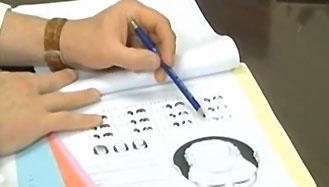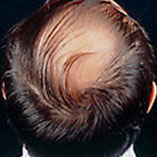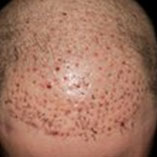Hair transplant planning

Assesment
A detailed first evaluation is not only absolutely necessary, but crucial for a good and safe result of a hair transplant. At a preliminary consultation, the physician examines the patient's scalp and hair, makes an assessment of density and miniaturization by video densitometry, reviews their choices and desires and suggests the ideal strategy and what outcomes might be expected. The doctor does a complete diagnostic analysis for patients with diffuse hair loss, generalized thinning or hair loss of unknown cause. Also, the medical specialist assess the medical history of the patient and might recommend further lab tests and/or biopsies, if necessary.
Very important! You must be deemed appropriate for the surgery! Be careful to inform the physician about any alergies or medical problems you have!
Check our Medical Database

What you have to do
For a week before surgery you must avoid using any medications which might lead in intraoperative hemorrhage and consequently resulting in low quality grafts. Excitants (alcohol, smoking, energizants, even some vitamins) can add to poor graft survival, so it is best to choose not to use them in the preliminary days - and even after surgery, also, for the continuing week. A thorough head shampoo is necessary, corporal hygiene being a contributor to a succesful procedure.
Schedule the surgery so you can have a 7 days time off afterwards, needed for a proper healing, and in this period the transplant must be protected by any exterior stress or agression. See more about this in the Patient's Guide.
After hair replacement surgery
The post-op development is influenced by careful following the instructions given by your doctor after surgery.
The first few nights you are advised to sleep with your head elevated on pillows, in a semi-upright posture or using a neck pillow. If necessary, medication for sleep and pain is recommended.
At the base of each graft it will form a small scab, these scabs disappear in 4-14 days, nothing to worry about.
In the first week some soreness, tightness and possibly some numbness may apear in the donor area, and in the recipient area some swelling (forehead, or even face). This will receide normally after 7 days.
Shampooing can be resumed after 1-2-3 days from surgery (depending of your doctors instructions), very-very gently - NO touching, NO rubbing, NO scrubbing, best just pour a mix of water and shampoo, until the head is clean of any blood. In the first day of shampooing: wash like this 3 times per day. For the next 7 days, shampoo like this twice a day. Antibiotics may or may not be needed - follow your doctor advice, and a disinfecting lotion / shampoo may be prescribed to use during the first few days.
Avoid alcohol for few days after the hair replacement procedure and abstain from smoking for two weeks.
Wear a hat if is to sunny, but NOT sunscreen (until at least 2 weeks after surgery).
Light exercise can be started in the first week, but avoid strong exercise for some weeks following hair restoration surgery, depending on your doctor instructions.
Avoid bathing, swimming, sauna, tanning for 2-3 weeks after the surgery, until your incision is fully closed.
The suture in the donor area will be completely healed after 7-10 days and the sutures (skin staples) can be removed - you will have an appointment at the clinic if this is the case. Some surgeons use absorbable stitches and these do not need to be removed .
Typically the grafted hair will shed in 2-4 weeks (do not worry, it's normal), but the root of these hairs remains intact and new hairs will grow from these roots between the second and the fifth month, at the normal rate of approximately 1/2 inch per month.
During the period in which the hairs will again begin to grow, some irritation of the skin may occur, which is caused by new hairs getting through the scalp. Also, the donor zone temporarily may becomes over-sensitive.
The final result can be assessed after 6 to 12 months.
Usually after 8-10 months the donor area has completelly recovered and, if another hair replacement procedure is needed , it can be considered.
Adjust your goals to reality
When taking the step of performing a hair transplant, one have to be realistic about his/her demands. A good examination will enable the physician to see if the patient has sufficient hair resources to match his/her expectations. Also, there should be a long-term plan in the event of further hair loss - this could happen more often that not. The specific aesthetic needs of the patient, particularly with respect to hairline design, should be discussed in detail and agreed upon beforehand. Don't forget that the outcome of a hair replacement surgery depends heavily on the actual reality of hair resources and general health condition.
Ask more!
Ask a medical representative a question about hair transplant:
Latest news
-

Transplant procedures can be somewhat painful mainly due to local anesthesia using injections into the scalp. But new procedures do not involve needles
-

Hair transplantation can be performed at any age, technicaly, but probably in many cases doctors recommend patients to wait up to an age close to 30 years.
-

-

Depending on the method used for harvesting grafts, recovery time can vary from a few days (FUE method) to 1-2 weeks (FUT or STRIP method)
-

Very important rules for a healty transition after hair transplant surgery.
-

What technique? FUE or STRIP? Advantages and disadvantages of each.
Latest forum posts
-


In the forums section you can receive informed answers (including from a medical representative) about hairtransplant issues, products or services of interest to you. Just ask!

